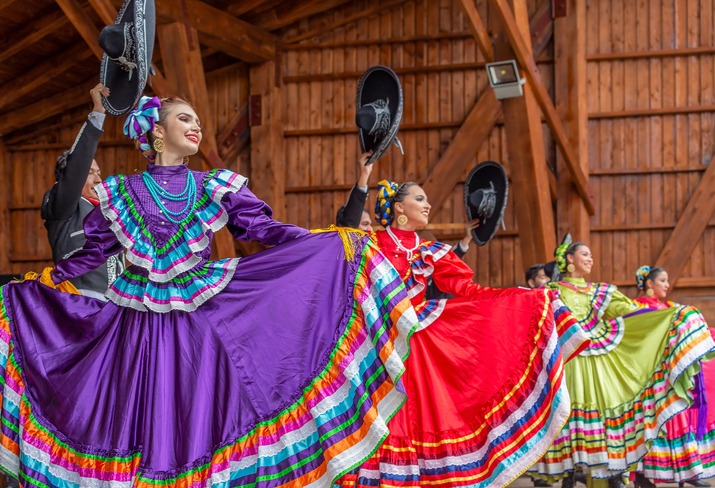3 marketing principles for reaching Hispanic audiences
Hispanic Heritage Month is underway. Here are three ways to avoid common multicultural marketing mistakes in your campaigns.

At least one big brand seems to apologize each year during Hispanic Heritage Month for a campaign that comes across as culturally insensitive.
For example, Twitch took heat last year for its Hispanic emote modifiers and Broward County just came under fire for an insensitive dancing taco GIF on its Facebook page. (The GIF was removed and Broward County Mayor Steve Geller apologized.)
The Broward County example is especially instructive since it has been awarded for inclusivity in the past, and even featured it in recent article for inclusive social media policies and content.
“It can happen to anybody,” admits Manny Ruiz, co-founder of Latino-owned Brilla Media, producers of next month’s Nuestro Fest Hispanic Heritage Month Pop Culture Festival.
Here’s his advice for reducing the risk that it happens to you—and for ensuring your multicultural campaigns attract the right kind of attention during Hispanic Heritage Month:
1. Dig deeper (especially with images). Mistakes are going to happen in multicultural marketing. Some are “innocent” and others are more insidious, according to Ruiz.
“Some are the result of low cultural IQ or unconscious bias,” he says. “Others happen when someone grabs ‘90s clip art from a Google search because they’re in a rush.”
Either way, he stresses that they’re all useful reminders to do your homework.
“Images are the easiest and most visible way to trip up,” Ruiz says. “So don’t settle for the first thing you find. Dig deeper and source images from credible sites and sources the Hispanic community is already following.”
Inclusivity image sites like Diversity Photos and The Jopwell Collection can also help.
2. Practice the 3Ps. Ruiz produces some of the nation’s largest Latino-oriented virtual and live events. His Altísimo Live festival, for example, brought together 60 Hispanic influencers and generated over $1.5 million for farmers last year.
“We were able to pull it together in just 23 days—all because Hispanics with the most visibility wanted to show their love for those with none,” he says. “Latinx celebrities like JLO showed up to support people who often don’t even show up in the census.”
The influencer space is highly developed in Latino culture, according to Ruiz.
“Latino celebrities are wonderful ambassadors for purposes they believe in and are quick to rally around a cause that champions the culture,” he says.
Here’s his advice for finding and working with Hispanic celebrities:
- Purpose. “Lead with something aspirational for them rally behind,” says Ruiz. “It can’t be vague or generic—you need a tangible goal and metric.”
For example, the goal for Altísimo was to “bring awareness that [Latino] farmworkers are essential workers during our biggest national crisis.” That not only brought Hispanic celebrities on board, but brands like P&G and PepsiCo joined as partners and provided everything from PPE to cleaning supplies.
- People. “The hardest thing is getting that first celebrity,” Ruiz says. “Once we got a few on board, they referred more—and they brought in their media partners.”
It also goes the other way, with media partners bringing in celebrities. For Altísimo, those partners included I Heart Media, People en Español, Telemundo Digital, MiTu and others.
“People don’t exist in silos,” says Ruiz. “Ask everyone to refer friends and partners. That’s especially important in the Hispanic sector.”
- Participation. “Celebrity relationships can get hung up on protocols,” Ruiz says. “The way around that is to work with tight deadlines to avoid stalling—and to give celebrities an open door to participate.”
What entices many celebrities to participate is access to exclusive, exciting content that they can share live on their social channels.
“It’s the FOMO principle,” explains Ruiz. “Social media algorithms also love it, so offer the access and permissions celebrities need to share your event live.”
3. Earn trust with authenticity. “The Hispanic market is thirsty for great content, including short-form documentaries and film,” says Ruiz. “However, you really must tell authentic stories and be a positive force in the market if you hope to break in.”
The Latinx market suffers from the negative imagery out there, he explains.
“I’m not talking about a Facebook image,” he says. “I’m talking about all the negative perceptions of illegals, crime, murders, rapists and the [garbage] pushed out recently. We’re looking for positive stories that shine a light into that darkness.”
Entry into the market takes more than just good intentions and great storytelling, however.
“It’s all about trust,” Ruiz says. “You’ll earn trust in this space if you have the chops, credibility and channels. Anything less than authenticity and ability won’t cut it.”
Brian Pittman is the Dean of Ragan Training. To learn more about the #1 training library of over 810 videos for communicators, contact him at brianp@ragan.com.







